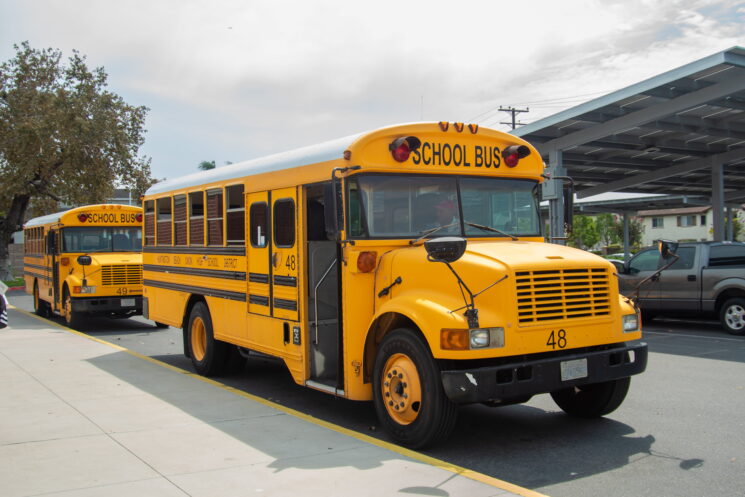
By Vy Nguyen
In January 2022, Senator Nancy Skinner published a bill allowing K-12 students to take public school buses to class for free. If passed, the bill will reverse many of the budget cuts made to the public school bus transportation system, which has been ongoing since the 1980s.
California is currently one of the only states in the US that does not require public school transportation for the whole student body. According to Orange County Department of Education spokesman Ian Hanigan, bus transportation is only mandatory for students with Individual Education Plans (IEPs). In addition, exceptions are made for students facing homelessness.
With the exception of such federal restrictions, the option to provide school transportation is largely up to individual districts. This makes up a total of 9% of students in California that have access to school-provided rides every day, one of the lowest rates out of all US states. Under Skinner’s new bill, titled Senate Bill 878 (SB 878), this policy would change, opening the school bus to all students.
Skinner says improved learning ability and increased safety are her primary reasons for proposing the bill. About 7% of all Californian households don’t own a vehicle, according to the National Equity Atlas, with statistics increasing for people of color.
“Getting to and from school should never be a barrier to student success,” Skinner said. “The research is clear: Students with school-provided transportation miss far fewer days and are more likely to graduate.”
Additionally, Skinner suggests that, for students that live closer to school, many parents may feel uncomfortable having their children walk or bike.
The logistics of the bill continue to be worked out, such as the cost of yellow school buses. The bus driver shortage plays a huge factor in the success of the bill as well, as this bus staff has dramatically decreased during Covid-19.
Fountain Valley High School’s (FVHS) Health teacher Bill Birinyi brings up the complication of social bullying and traffic congestion, which could worsen with school buses.
“Bullying is an incredibly common problem on buses. For victims of bullying, if it’s already happening at school, now you have to see your bully on the school bus before and after school,” Birinyi said. “Before you even start your day, you’re facing the risk of harassment, the risk of danger. Plus, there are practical questions, such as, where will the buses dock?”
However, AP Human Geography and US Government teacher Julie Chaicharee touches upon the issue of congestion at FVHS and suggests that school buses could improve the situation.
“Car transportation leads to the issue of traffic and congestion at FVHS,” Chaicharee said. “If there are school buses, the goal–or the ideal situation, at least–is that the bus will transport a large number of students at once, rather than individual students riding to school in cars.”
Aside from the problem of traffic, the bill addresses whether there is a need for school buses for the students of FVHS.
A route of a school bus in the Huntington Beach Union High School District (HBUHSD) would span across Fountain Valley, Huntington Beach and Westminster. For in-district students at school, this could mean less time spent waiting before or after school and a lower risk of physical danger during commute time, as well as more time to socialize with friends.
“School-provided buses can increase safety for students, many of whom do walk and bike. Years ago, I knew a student biking home, and he was hit by a passing car, right near a 7-Eleven in Fountain Valley,” Chaicharee said. “Yellow school buses are also one of those traditional things; they are an integral part of American culture. [The buses] help bring the community together; they connect us through public service, rather than kids walking or biking on their own.”
One student, who chooses to remain anonymous, shares her personal experience regarding school transportation. She advocates for a school bus system open to everyone on the basis of safety for all students.
“Even though I live within the district, I’m not walking distance to FVHS. My parents work later than school hours, so I take the public bus home everyday,” the student said. “The scary thing with rides not offered by the school is, if something happens, you don’t know if you’re under the protection of your district, [unlike with] yellow buses.”
The student stresses the importance of including all students and providing equitable access to privileges such as school transportation.
“Students could definitely still choose between a car, bus, or any other mode they may prefer, but the option for a school bus could still be given to other students who have no other way of getting home.”
Though there are still decisions to be made regarding SB 878, one thing is for certain: with California not having provided public school transportation for so long, Skinner’s bill, if passed as a law, would transform much of the school transportation system.





